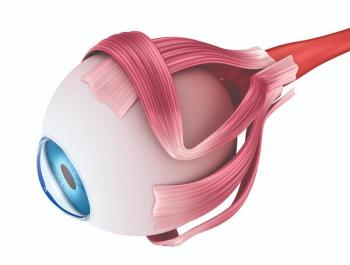
Visus Therapeutics kicks off Phase 3 pivotal trial for presbyopia treatment
The company has dosed the first patients in a Phase 3 trial evaluating the safety and efficacy of Brimochol PF, a preservative-free topical ophthalmic solution for the treatment of presbyopia.
Visus Therapeutics Inc. today announced the launch of the first of two pivotal Phase 3 trials (BRIO-I and BRIO-II) for its lead asset, Brimochol PF, a preservative-free topical ophthalmic solution for the treatment of presbyopia.
Acording to the company, the initiation of the BRIO trials follows compelling topline data from the company’s Phase 2 VIVID clinical study, which demonstrated two preservative-free formulations, Brimochol PF and Carbachol PF, were well tolerated and met clinical outcomes to support advancement into pivotal trials. BRIO-I and BRIO-II are double-masked, randomized, multi-center, safety and efficacy studies expected to enroll emmetropic phakic and pseudophakic presbyopic patients (approximately 170 and 500 respectively).
Following encouraging results from the recently completed Phase 2 trial, the company said in a news release that it seeks to demonstrate that Brimochol PF, a proprietary, preservative-free, fixed-dose combination of carbachol (a cholinergic miotic agent) and brimonidine tartrate (an alpha-2 agonist), is a safe and effective once-daily eye drop to correct the loss of near vision associated with presbyopia.
The primary efficacy endpoint is the percentage of patients who gain three lines of improvement in binocular near visual acuity without losing one line of distance vision. The first read out of this study is anticipated in Q4 2022.
According to Ben Bergo, co-founder and chief executive officer at Visus Therapeutics, today’s increasingly digital world places significant demands on our near vision, which results in a hardship for the 128 million adults in the U.S. who suffer from presbyopia.
“The currently approved therapeutic option only shows statistically significant benefits on the near visual acuity primary endpoint out to three hours, which does not meet the needs of typical patients who desire to take just one eye drop in the morning to achieve near vision improvement for the duration of their eight-hour-plus day,” Bergo said.
Bergo also noted in a statement that amid the encouraging results of the company’s Phase 2 VIVID study, it is optimistic that Brimochol PF will provide this meaningful increase in near vision improvement that company officials believe will be a primary driver for patient preference in this category.
“The gold standard for dosing with eye drop therapeutics is once per day, and for a quality-of-life medication without insurance reimbursement, the distinction between a drop that lasts a few hours and a drop that lasts throughout the workday will be even more pronounced,” he said.
Rhett Schiffman, MD, MS, MHSA, co-founder, chief medical officer and head of research and development at Visus Therapeutics, the initiation of the first Phase 3 trial is a key occasion for the company.
“The BRIO-I and BRIO-II clinical trials are designed to expand upon the results of our Phase 2 VIVID study, which demonstrated the advantages of the unique mechanisms of action of carbachol and brimonidine tartrate as an effective, once-daily presbyopia-correcting eye drop,” Schiffman said. “The response rates of our formulations appear to be much higher over an extended period of time than the commercially available therapy as well as the therapies in development, according to clinical studies. We anticipate the Phase 3 trial will generate the pivotal data required to support our New Drug Application, bringing us one step closer to offering a novel, preservative-free therapy for patients.”
The BRIO-I and BRIO-II trials are designed to study Brimochol PF, a novel, fixed-dose combination of carbachol and brimonidine tartrate, and a proprietary, preservative-free formulation of carbachol monotherapy. Both formulations produce a “pinhole effect,” which reduces the size of the pupil and allows the light rays focused on the retina to enter the eye, thereby sharpening vision while mitigating side effects. The result is clarity of vision for near tasks like reading or using a smartphone, and intermediate tasks such as looking at a computer screen. In addition, brimonidine is known to cosmetically whiten the eye.1
Presbyopia is the loss of near vision associated with aging, making it difficult to perform tasks like reading fine print. It typically begins when adults are in their 40s and becomes almost universal by age 50.2 Presbyopia impacts billions of people globally with approximately 128 million adults affected in the U.S. alone.3,4 Reading glasses are the most common solution for near-vision correction. However, many people find glasses inconvenient or prefer not to wear them for aesthetic reasons.
References
1 McLaurin, E., Cavet, M. E., Gomes, P. J., & Ciolino, J. B. (2018). Brimonidine Ophthalmic Solution 0.025% for Reduction of Ocular Redness: A Randomized Clinical Trial. Optometry and vision science : official publication of the American Academy of Optometry, 95(3), 264–271.
2 U.S. Census Bureau. Retrieved September 7, 2019 from http://www.census.gov.
3 Zebardast et al. The Prevalence and Demographic Associations of Presenting Near-Vision Impairment Among Adults Living in the United States. Am J Ophthalmol. 2017;174:134-144.
4 U.S. Census Bureau. Table 9. Washington: Population Division. 2014.
Newsletter
Don’t miss out—get Ophthalmology Times updates on the latest clinical advancements and expert interviews, straight to your inbox.













































